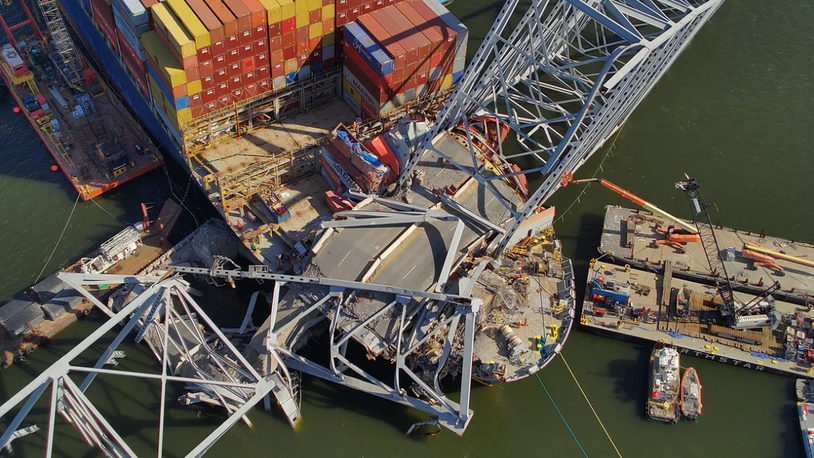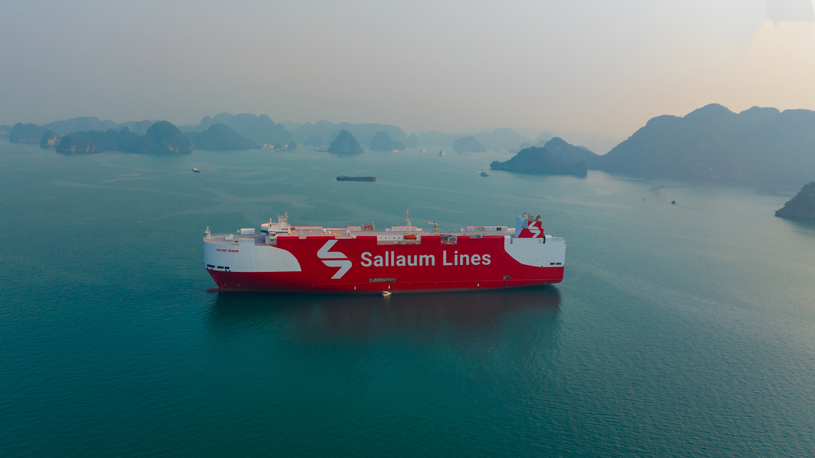Business Sectors
Events
Contents
Role-based approach to crew scheduling saves money
Over the past five to 10 years, some fleets have grown dramatically in light of significant consolidation among operators. This trend has created innumerable challenges with respect to how companies manage their growing workforce to ensure that the right staff are on the right ships at the right time.
The traditional solution was the humble spreadsheet. While a simplistic and often a somewhat ad-hoc approach, it provided companies with sufficient flexibility to manage a small number of staff. However, as a company grows this method becomes increasingly unwieldy. Columns are highlighted in more and more colours that become ever harder to differentiate, and the number of tabs for different sheets proliferates as new functionalities are required. Cross linking makes ongoing maintenance increasingly difficult, and eventually, the complexity becomes too much and the sheets break.
The problem is exacerbated by the fact that many companies have grown by acquisition. Typically, each organisation has used its own crew and personnel management system, and invariably they do not work together. This makes it difficult for the new parent company to efficiently make best use of its poolof resources.
Another common denominator is that while organisations are expanding quickly – perhaps doubling the size of their workforce – they are reluctant to boost the human resources personnel to manage this growth.
MAPS crew management software was first released by Manpower Software over 15 years ago, but it has changed considerably in that time to meet the changing shape of maritime organisations and to take on board new technologies. For example, early incarnations were based on Microsoft’s Access database, but the software house has since migrated to an SQL infrastructure. Reflecting the growth and popularity of the Internet, the company has recently been working on a web-based interface that will complement a traditional locally installed application.
The software originated from a need in the defence sector to allocate and transfer huge numbers of personnel to units, according to very specific role requirements. The resulting solution saw the concept of classifyingpersonnel by competencies and function matched to a structural model of roles within the organisation.
This approach lent itself very nicely to the maritime sector, where STCW95 clearly specifies the qualifications and skill-setsneeded for different roles on board ship. It therefore provides an efficient way ofmatching and allocating staff, and can also help reveal any imbalances.
Furthermore, if a company has a repository of information amassed over several years, it becomes possible to analyse trends, resulting in better forward planning. For example, an owner commencing a newbuild programme can quickly identify what level of crew – both quantity and quality – it will need to operate those ships once they enter service. In this way, recruitment can be arranged well in advance, allowing sufficient lead time to deal with any unexpected problems.
Manpower Software has recently started making inroads to the offshore oil and gas industry as well. While the number of personnel may be smaller than for a major ship operator or owner, the ability to pre-plan staff allocation is invaluable when a company is bidding for a project costing many millions of dollars. “This is because while they can generally predict which projects will happen, they often do not know exactly when each will be initiated. The timetable can be skewed by any number of external factors, such as the price of oil, local geo-politics as well as the physical availability of platform resources,” says Lee Clarke, product services manager for the maritime, oil and gas sectors at Manpower Software.
The MAPS Maritime Suite can provide an indication of whom a company will need and when they will be needed in the future, because the core user interface is based on a timeline that can be moved into the past or into the future, rather than just displaying a snapshot of the current situation.
This is possible since the company is represented internally as a structured organisation and not a list of personnel records. In a shipping company this could be broken down as lines or brands (especially for the cruise sector), vessel type and then individual vessel. After the structure has been defined, the next step is to add the positions required on each vessel. When the personnel information is entered, the roles will be automatically matched.
According to Mr Clarke, a structured model of the company often leads to more efficient business procedures across the board: “When working with a company towards deploying the MAPS Maritime Suite, we recommend that it agrees on a common usage policy throughout the organisation. The software is not designed for a single department but as a company-wide tool. If everyone is using it in the same way, the usefulness and hence benefits are much greater. A byproduct of using the MAPS Maritime Suite is that it enforces a set of procedures that often result in refined ways of working.”
Many of the MAPS Maritime Suite’s most powerful features stem from a range of function specific modules. For example, it is possible to search within a company for forthcoming vacancies using the ‘internal headhunting’ facility. Staff can be searched and filtered on a wide range of criteria, including qualifications, availability and location. The simplest type of matching is based on minimum qualifications for a post, but, points out Mr Clarke, it is also important to filter out staff that will not be available for the whole duration of the post, for example, if they are on rotating vacation or if they will be leaving the company during the period.
Physical location of staff is generally determined by a ship’s itinerary, but the module also has access to their home addresses (and nearest airport), so that travel to the new post can be arranged in as straightforward a manner as possible. Travel arrangements themselves are handled automatically by a separate module. “Cruise operators, in particular, find their travel co-ordinators spend a disproportionate amount of time simply booking and re-booking, because there was no business process in place to streamline the task,” explains Mr Clarke.
“Typically,” he says, “schedulers would create staff schedules and hand these to the travel team who would subsequently book the travel through Amadeus or a similar system and then send back notification. It was very ad-hoc and, depending which member of staff was handling a request, could happen quickly or enter a backlog.”
With the MAPS Maritime Suite, however, travel is arranged automatically in the background. Four weeks before someone is due to join a vessel, the system will check to see ifthat person needs a travel request generated. If they do, the request will be performed automatically. This module, says Mr Clarke, is the one that is most easily identifiable with tangible financial savings.
“Because bookings are made earlier, it is possible to negotiate better prices on flights. If the posting changes, say due to an alteration in a vessel’s itinerary, travel can be cancelled much more promptly, thus saving on cancellation charges or no-shows,” continues Mr Clarke. Furthermore, because the travel coordinators are no longer weighed down by routine tasks, they can concentrate on negotiating better deals or solving problems.
Another example of cross module integration is training. When someone new to the company needs to attend a course, this will automatically be flagged up in the training department. If the newcomer passes the course, their list of qualifications is automatically updated, saving someone in the personnel having to enter the information by hand.
Other modules have been developed for berthing, emergency duty rosters, and crew immigration control. As such, MAPS Maritime Suite is a particularly attractive solution for the cruise sector. Indeed, P&O Princess Cruises – which has more than 40,000 crew members in total – is one major user of the application. Due to the human resources that need to be managed on a large cruise ship, the software is normally installed on board as well as in the shore office. Changes made on one side can be replicated to the other.
The needs of the merchant marine sector, however, differ significantly. A P Møller-Mærsk, for instance, employs over 10,000 crew members worldwide, but most of its ships are manned by teams of only 14-20. Mr Clarke notes that the major emphasis is less on scheduling but more on safety and training, and in particular appraisals.
Depending on each client company’s requests, the software can just record the fact that an evaluation has taken place or every detail about the evaluation, including scanned copies of all documentation generated in the exercise. Checkpoints can be set up so that is easy to see which appraisals have taken place, which have been reviewed, and which can be filed away.
One client has set up the system to plan appraisals ahead of schedule, so that the ship’s captain is presented with a list of crew who have to be interviewed before they sign off. The idea here, says Mr Clarke, is that the captain is relieved from the burden of keeping a notebook tally and then arranging times.
Scoring evaluations presents a challenge, since it could be very easy to over-engineer a solution. The approach taken by Manpower Software is to allow companies to set up lists of questions and possible scores for each different appraisal group. It also possible to incorporate boxes for free-text comments.
Following appraisals, it is possible to arrange training or recommend certain staff for promotions. This latter ability can be utilised if there is a staff shortfall when re-scheduling rotas. “This is because,” explains Mr Clarke, “the rules can be relaxed for minimum rank requirement to display personnel who are ready for promotion.”
Due to the small size of crews and limited electronic communications links to shore, most merchant vessels do not install the full MAPS Maritime Suite on board. However, Manpower Software has identified a need for a lightweight interface so that the captain can keep abreast of any personnel schedule changes that have been made ashore.
To that end, the company is on the verge of completing a web-based application to serve this purpose. While it does not offer full replication, the simpler data model does interface back with the full shore-based installation. One of the first companies to use this tool will be CMA-CGM, the large French container shipping operator with a fleet of 350 ships and slot capacity of over 800,000 TEU.
Related to this Story
Events
Maritime Environmental Protection Webinar Week
Cyber & Vessel Security Webinar Week
The illusion of safety: what we're getting wrong about crews, tech, and fatigue
Responsible Ship Recycling Forum 2025
© 2024 Riviera Maritime Media Ltd.













